EDITOR’S PREFACE: Thanks to a recommendation from my friend MaxR at Metal Bandcamp, I discovered an article written by veteran musician Matt Harvey of California’s Exhumed that he posted at the Exhumed blog (here) in late August. It consists of reflections about the evolution of death metal, as he has witnessed it, over the more than two decades he has spent in the scene.
I thought the article was really well-written and very thought-provoking, and it occurred to me (and to Max) that it was something more people ought to see. I also suspected that it would generate some interesting discussion among readers of our site. So, I contacted Matt Harvey and asked for his permission to re-publish his article here, and he graciously agreed.
I’ve re-posted the article exactly as it appeared on the Exhumed blog, with the same graphics, links, and music clips. Perhaps needless to say, I hope people will make the time to read this in its entirety and to add your thoughts in the Comments. I don’t expect everyone will agree with all of Matt’s observations and opinions, but I think you’ll find it informative and interesting, regardless. Here you go:
As I read through Extremity Retained, the excellent collection of Death Metal interviews compiled, edited, and given context by my friend Jason Netherton, it brings back a lot of memories and thoughts on the Death Metal scene and my now two-plus decade long involvement in it (yup, feeling old here!). It’s full of great reminiscences from many of my peers and as well as from guys I looked up to in the early days of Exhumed. I can’t help but feel a bit reflective and look back on the changes and course of the genre in general. The thing that still strikes me the most was the transformation in the sound of the genre between ’90 and ’95. I thought I’d use my band’s blog as a place to spout off a few ideas about how and why the genre went out of fashion in the mid 1990s, much like Thrash Metal did in 1991. I suppose these reflections would have fit in better with my (generously included) contributions in the book, but reading it as a whole kind of spurred me into thinking about all of this and writing this all out.
If you don’t have this book yet, fucking buy it!!
I don’t remember exactly who I was talking to, but I was looking back on my days as a rabid Death Metaller from ’90-’94 or so, and I was saying that after around ’94 I lost interest in the Death Metal scene and got heavily into Thrash Metal and Crossover from the ’80s. They responded, with a healthy degree of good natured ribbing, that ’93-’94 was when I “gave up on Death Metal.” That sentence kind of hit me like a glass of cold water in the face. I would say I’ve done many things in my life, but one thing I never felt that I did was “give up on Death Metal.” I felt like by ’93 and ’94 Death Metal had lost the vast majority of what made it interesting to me. The bands that intrigued me the most (Carcass, Entombed, Repulsion, Carnage, Terrorizer, Napalm, Death, had either moved on creatively to other styles of music or hadn’t existed for a few years at that point (except for Autopsy, who were on the verge of splitting up by then). I felt like Death Metal had given up on me. With the rise to prominence of Cannibal Corpse, Morbid Angel (I suppose they had always been prominent), and Suffocation – who, by ’95 represented the last high-speed bands standing (Obituary had become quasi-groove metal by the time World Demise hit and Napalm Death was dabbling heavily in industrial metal), the punk-infused, loose and nasty form of Death Metal was in short supply. Unleashed and Grave had both slowed their sounds down by the mid-90s, and even Slaughter of the Soul, one of my favorite albums of the period, owes more to Dark Angel than it does to the obscure Death Metal of the band’s earlier period. Certainly record labels had given up on Death Metal – with the exception (mostly) of Relapse, but even they were well on their way to creating an aesthetic that would enable them to sign a band like Neurosis (which was sincere, as well as a savvy business move). Not the best time to be a Massacre and Necrovore fan.
So, this begs the question – what happened between ’88 and ’93 that contributed to the genre’s downturn in popularity in the mid ’90s and its subsequent stylistic permutations? How did “the end of music as we know it” become such an over-saturated sub-genre ready to be supplanted as the de rigueur underground Metal style? Like any question covering an international artistic movement, there are a lot of answers.
– Part I: The “real musicians”
One thing that I think is often ignored, that still grates me to this day is that around ’91-’92, we saw the the introduction of “real musicians” into the Death Metal genre. In 1988, every guitar nerd with a flourescent Ibanez guitar with a handle in it was in a Thrash Metal band of some iteration or other – funk-thrash was gaining a lot of traction around ’91. Seriously. That was a thing.
When I was growing up, these were very popular rock and metal guitars. Yeah, it’s not all “glory days” this and “good old days” that, let me tell you.
Why were they playing Thrash? Because it had the virtue of being intense and affording musicians more room to show off their chops but was still comparatively mainstream and had a wide enough audience that you would be showing off your chops to someone. Metallica, Slayer, Megadeath, and Anthrax were selling records by the truck-load and even Coroner, Voivod, and Kreator had videos on MTV.
If you had cable TV and nothing to do on a Saturday night in 1989, you could see this. It was fucking awesome.
But, as with anything, the popularity of Thrash Metal faded with its novelty – what was innovative in 1983 was trite by 1989. When Thrash Metal died out in about ’91 or so (the “Clash of the Titans” tour effectively capped the end of the Thrash Metal era) fans were divided. Of course, some people no longer cared about music and became accountants that listened to the radio, but those who continued as members of a “scene” or avid record-buyers / concert-goers tended to split in two directions. Firstly, many younger males moved on from Thrash to Death Metal as Roadrunner and Earache began to gobble up record store rack space previously occupied by Noise Records and Combat. Older males and females across the age-spectrum of thrash fandom however, moved toward grunge – the logical endpoint of crossover. Grunge provided the volume and bombast of mainstream metal with the simplification and lack of pretension of punk, and succeeded in becoming a watered-down, commercially appealing equivalent of both. While Death Metal absorbed the far smaller portion of recently displaced music fans, that influx of audience members was a massive growth spurt for the previously super-underground genre.
Which brings us back to our Funk-Thrashing, Guitar-Center frequenting friends I mentioned earlier, eager for an intense form of music to show off their diligently practiced chops. They were a different breed than the original generation of Death Metal musicians, who never got into the genre with traditional ideas of musical development as instrumentalists, simply because Death Metal was beyond underground, and borderline unacceptable in the mid-80s. People that wanted to pursue “musicality” just weren’t into Death Metal. When Death, Massacre, Xecutioner, Morbid Angel, Master, Autopsy, Carcass, and Napalm Death were honing their craft, “real musicians” were just beginning to admit that Metallica wasn’t a bunch of racket – but the sounds cranked out by the aforementioned bands? That was pure noise, bad comedy. Every Death or Black Metal band from the early 80s (Sodom, Kreator, Possessed, Bathory, Sacrifice, Possessed, et al) moved as quickly towards Thrash Metal as their musical prowess would allow. However, by ’91-’92, these legions of Guitar for the Practicing Musician readers were joining, or worse, forming, Death Metal bands. By 1993, Headbanger’s Ball (at least in America) was on its way out. But videos from Carcass, Morbid Angel, Death, and Napalm Death were part of its last gasp. So the genre was as close to mass-exposed as it would ever be in the states. The result was very similar to what happened to Thrash Metal around ’87 or ’88 – there was a glut of extremely competent, utterly uninspiring bands releasing EP’s and albums cluttering up the scene. The terrible paradox was that the records were performed more competently than ever, but with very little identity and real passion for the genre.
I can’t say Nocturnus wasn’t original, but I can say they did not have cool hair.
Certainly many of the members of the innovative Death Metal bands mentioned above grew to become excellent musicians in their own right – but the distinction here is that Death Metal was the primary drive, not showing off their chops. As the ’90s wore on, the speed and “extremity” of Death Metal increasingly attracted “musician” types who were out to prove that they were the fastest or most technical – which were substituted for intensity and individuality, spawning legions of extremely skilled and marginally listenable tech-death bands. The musically reckless, punk-infused side of Death Metal was waning by ’93, so I retreated to pastures that more closely reflected my personal flavor of choice: raw 80s Metal – be it Death, Thrash, Crossover or just plain Heavy Metal, I spent the second half of the ’90s obsessing over records like Incubus’ Serpent Temptation, Razor‘s Violent Restitution, and Money Talks by Cryptic Slaughter. As much as I wasn’t much of a black metal fan (although there were a considerable number of those records I liked at the time) I essentially sympathized with the Black Metal scene’s attitude toward what Death Metal had become by the mid-’90s – safe, sterile, over-produced and over-saturated.
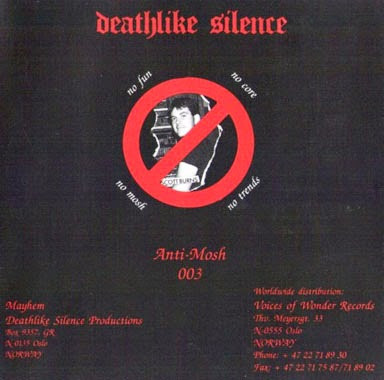
The classic “Anti-Scott Burns” graphic from Mayhem‘s Deathcrush EP. Even the catalog number of the release hates Earache Records.
Interestingly enough, the same bands that helped to push the genre’s musical athleticism to new heights were also responsible for spawning it’s most knuckle-dragger-friendly cliches. Suffocation balanced incredibly nimble, nuanced guitar-work with the simplest, heaviest riffing the genre had see with Effigy of the Forgotten, not only contributing to the technical prowess of the genre as a whole, but also providing the seeds for what would become “Slam” – probably the most rhythmically simplistic form of Death Metal out there, which seems to be incomprehensibly, yet intrinsically linked to the subject matter of pot-smoking and pornography. Cannibal Corpse arrived as a musical force with Tomb of the Mutilated, but simultaneously dragged the genre’s obsession with gore and violence into a brand of petulant misogyny that only got more embarrassing with their next album, The Bleeding. Luckily, the band has eschewed that sort of cheap sensationalism as time has progressed and focused on horror and gore without overtly sexist themes after the departure of original vocalist Chris Barnes.
Although this song is admittedly very fucking badass.
– Part II: The labels
Of course, the host of mediocre, uninspired and uninspiring musicians playing Death Metal were far from the only culprits in the demise of the genre’s brief commercial peak. Equally culpable (possibly more so) are record labels, with Roadrunner and Earache being the most egregious offenders. Labels, like any other business, were in a race to produce the most predictable return on their investment – a business practice that quickly leads to artistic stagnation. Roadrunner seemed eager to give all of the Death Metal projects to (the admittedly great) engineer / producer Scott Burns, who faced with decreasing recording artist talent, increasing workload, and decreasing budgets, spawned the “Morrisound Sound,” which while it was a good sound (probably because it was a good sound), was subsequently beaten into the ground. Between Dan Seagrave’s ubiquitous artwork and Scott Burns’ increasingly homogenous production, Death Metal albums were beginning to sound and look frightfully predictable. Your Monstrosity became not too unlike your Resurrection which wasn’t that different from your Brutality. The problem with these albums isn’t that they’re awful – in fact they’re actually pretty decent, and these records honestly sound better today than they did 20 years ago – simply because not every new album that you hear sounds like this anymore. The problem is that these bands simply aren’t remarkable. None of them will ever have a Slowly We Rot or a Symphonies of Sickness in their catalogs. And in all fairness, I don’t know that my band ever will either. I can live with that, but just saying… And if my band had gotten signed in 1991, we would have JUMPED at the chance to record at Morrisound and have Dan Seagrave cover art. Which is one of the many reasons we weren’t ready to be signed in 1991. Also, we sounded like crap.
Like I said… Pretty much crap.
Exhibits A, B, and C. Not exactly sure what’s going on in any of these ambiguously spooky album covers or how they relate to the album titles at all. And 20 years later, I still can’t quite muster up the energy to care.
By 1991, even a marginally savvy record-buyer like myself (age 15/16) could tell that if it was a Death Metal album on Roadrunner, it would have the same production, the same artwork and it would be reliably decent. A genre can’t grow and can’t remain relevant on “reliably decent.” Thrash Metal lasted nearly 10 years because every year you would get a significant, “future classic” sort of record, Show No Mercy to The Legacy to …And Justice For All to Beneath The Remains (and those are just a few of only the “commercially successful” thrash classics). Sure, there are tons of clunkers from tons of bands in the Thrash genre, but many of the best Death Metal bands with the most to say only made two or three albums in the genre before abandoning it for something less aesthetically constrictive. Heartwork is more closely aligned with Kreator or Megadeth than with Extreme Noise Terror or S.O.B. Wolverine Blues is I guess, sort of Death Metal? I dunno…
Still on the fence about this album 20 years later.
Equally as damaging was that by ’95-’96, Nuclear Blast, Century Media, and Roadrunner had dropped most of their Death Metal bands. As soon as the genre’s comparative popularity waned, most of the bands found themselves unsigned very quickly. Roadrunner even dropped Immolation for fuck’s sake, so it wasn’t just mediocre 2nd and 3rd generation bands getting the axe. Just as Death Metal had gotten musically complacent, the sensationalism of Black Metal came along and grabbed headlines with tales of arson and murder and a different (let’s be honest – predominantly way shittier) sound. Soon treble-knob loving Scandinavians made Death Metal obsolete and the ’90s iteration of Black Metal became the “extreme metal” of choice of the (truly awful) mid to late ’90s, giving fat / really skinny dudes from Orange County a reason to either wear capes and buy drinking horns. That really sucked.
Everybody had THAT friend in 1996.
Which brings us to the third, and probably most fatal problem preventing Death Metal from having any breakthrough or sustainable commercial success or aesthetic longevity (as a creative and innovative medium). When your goal is to put out the most extreme, horrifying and over-the-top record and you succeed (even if only in your eyes), there’s no place to artistically go from there. You can either a) broaden your style, b) repeat yourself or c) simply quit, like Repulsion did. When you begin at the musical end of the line, with no melody, the fastest tempos your musicianship will allow and the most evil, frightening riffs you can compose, anything else you do is going to be either a slight variation on a theme or a watering down of your sound.
The best example of quitting while you’re ahead in the history of rock and roll.
For this reason, to me, Death Metal represents the ultimate endpoint of the entire genre of Rock Music. We have to be realistic and concede that Rock and Roll is a 20th century phenomenon. Lemmy is in his late 60s, and most of the genre’s originators are either dead or old enough to be great-grandparents. Current successful rock bands do little more than parrot genre cliches and Death Metal is no different. Taking Heavy Metal and punk to their logical endpoints of gratuitous volume, speed, and power, the genre effectively killed underground metal as a marketable commodity in the United States for decade or more. Certainly its intensity resonated on a larger scale and paved the way for bands like Slipknot and Deftones to bring heavier (still extremely shitty if we’re being honest) sounds to larger audiences later on in the 90s, but that’s hardly a mark of success. But realistically, Death Metal was never designed to be listenable or sonically acceptable. In fact, it’s just the opposite. Not that it isn’t musical or doesn’t require talent (even though it really doesn’t sometimes), but it’s supposed to be abrasive, unlistenable and horrifying. It’s fucking Death Metal after all.
That’s one of the many reasons I have a difficult time listening to the “Death Metal” of the late ’90s and beyond. Much of it is simply treading water on innovative ideas that had long since been thoroughly explored by more inspired practitioners (my band’s records probably fall into that category) – or it’s played by capable, well-meaning, but ultimately boring musicians who have confused “intensity” and “brutality” with the number of beats per minute in their drummer can quietly double-stroke his kick drums at or how many riffs they can cram into one “song.” Or, even worse, it’s played by capable and well-meaning musicians who think that Death Metal would sound better if only it were blended with Jazz/Fusion or polyrhythms or dubstep or video-game sound effects or whatever the fuck kind of stuff musician types like to play.
As far as younger musicians, they have always been competitively minded. Today, we live in a world that, via widely available technology, is more and more quantified and quantifiable. The competitive approach to playing at higher and higher beats-per-minute, does follow a specific type of logic (if a dreadful lack of imagination). In the 21st century, everything has become calculable – from how many people click on the links in your press release and how many fans your band has, to the music itself. Also, everything has become edited – from photo shoots to movies that are more CGI than film, to auto-tune to quantized bass-drum tracks on “death metal” albums. Younger people see the world in more quantified terms, and view and create art with these standards in mind – and rightfully so. They are a new generation that has never experienced life without the internet and cell phones, and they are the youth and should be making youth music. But the way they play “Death Metal” bears little resemblance to albums I grew up with like Consuming Impulse or War Master. Furthermore, is Death Metal or any kind of Rock and Roll really “youth music” at this point? After all, Seven Churches came out in 1985 – almost thirty years ago at this point.
Please don’t tell me this is “thrash” – it’s literally called “Death Metal.” How much clearer can it be?? So yeah – roto-toms are Death Metal as fuck.
I’m not saying that’s bad, but I’m saying that it misses out on something intrinsic to the genre as I know it. That’s why a band like Nunslaughter or Asphyx will always be more Death Metal than a band with tons of super-fast blast beats or the “lowest” vocals. The quantifying of everything reduces art to something measurable and cheapens the expression. Of course, younger people won’t see it that way, because they’ve grown up with a different set of aesthetic values than I have, and that’s okay. I’m not saying that there’s only one “true” way of Death Metal for everyone, but I know that there is for me. And I’m fine with that.
However… if there was only one “true” way of Death Metal, this would definitely be it.
– Part IV: “Classic Rock Syndrome”
Which brings me to my last point. If someone had told me when I was sixteen I would be pushing forty and still playing in Exhumed and that Morbid Angel and Carcass would still be touring playing “Chapel of Ghouls” and “Corporeal Jigsore Quandary” every night, I would have laughed them out of the room. Because really, how long is any kind of rock and roll movement supposed to last? The majority of the punk movement sputtered out within five years, Thrash Metal went from a regional curiosity in San Francisco, Germany and Los Angeles to a global phenomenon and then to a virtually dead style within eight years or so. The New Wave of British Heavy Metal went from about ’77-’82. The superstars of the sixties rock world (Hendrix, The Beatles, The Doors) became permanently enshrined precisely because they didn’t last.
No reunion tours currently in the works, at least according to Bandsintown. Sorry – too soon?
And yet here we have Death Metal bands whose creative peaks are long since behind them trotting out the hits night after night on the tour circuit. Like all bastard sons, Death Metal killed its father (or at least gave it the old college try) – mainstream rock and metal – and then proceeded to take on his most repugnant attributes – greatest hits tours, creative water-treading and, worst of all, artists giving the people precisely what they want – whether it’s reunions, creatively stagnant but reliably consistent albums, or just more Altars of Madness shirts.
I can’t wait for the reissue with “40 Years of Madness” on the back.
Ultimately it’s bittersweet. Because, besides playing this music, first and foremost, I’m a fan of the genre and I enjoy reunion tours and Altars of Madness t-shirts. Being an optimist, I have to find it encouraging that all of the hellish racket captured on demo tapes, LPs, 7 inches and CDs in the 80s and 90s has created something that’s still with us today. We live in a capitalist, commercial society, and those avenues ultimately become the litmus test for an artistic statement’s viability. If there’s a market for it, it’s still around. And surprisingly enough, there is still a market for Death Metal, though not as booming or on the upswing as it was 22 years ago. But it couldn’t be any other way.
– Epilog: Is music that big of a deal anymore anyway?
I’m going to end this on a question… Certainly in the 80s and early 90s there were large portions of teenagers that identified specifically as a social group based around music preferences – metal, goth, punk, rap, whatever. Whether that’s the case now, I have no idea. And if it is the case, does the music mean as much to the audience when they get it for free from the comfort of their own computer desk? Or directly to their cell phone? To me – from an old curmudgeon’s point of view – it’s difficult to see how a musical movement can be as personal or mean as much to a teenager today when they haven’t invested nearly as much time, effort and money into finding and purchasing the music. Or maybe it will mean a lot, but will it mean a lot for twenty years? They’ll never have to ride their bike an extra five miles because the record store down the street doesn’t stock Napalm Death. They’ll never need to make mix-tapes in real time (they’re lucky – that shit is tedious). I don’t want to get into the whole “younger people have shorter attention spans” bullshit, because every generation says that and I heard it about Atari 2600 and music videos, so fuck that – but without the effort of spending your hard-earned money on music, having to actually turn up to gigs to see bands, needing to memorize information about bands or hold onto zines and mags, is it really as personal? I hope so, but the experience is so different today from what I grew up with that I really don’t know.
I’m pretty sure these chicks were feeling it!
The entire attitude toward music in our society has shifted. It was always seen as financially tenuous and a bad risk, but now it’s degraded to something that’s nice, but ultimately valueless. It’s something people give away for free. It’s something that is so easy to steal, it’s not even a crime to steal it. I’ve illegally downloaded stuff too, so I’m not putting myself above anyone here. I just think that the way technology has evolved, pop music (which includes rock, metal, punk, R&B, hip-hop, oldies, country, and anything else you might hear on FM radio) has become a disposable, public-domain type commodity. That change may open up a host of new business opportunities for music to someone far more creative and foresighted than myself, but as it stands now, it has created a culture that severely devalues music. Even streaming services like Pandora and Spotify are struggling from what I’ve read.
All of that said, one of the greatest things about being a “genre” fan and musician (it’s the same in film, books, television, probably other arts as well) is that people who are really into the genre are lifers. Go to any Star Trek convention or ask a nerd about the Serenity TV show and you will see a tremendous outpouring of passion. People into metal – the more underground the truer this holds – have that same kind of Trekkie-level excitement about stuff like the Thy Abhorrent Death Rides At Dawn 7” EP. They live for this shit and are the reason that Death Metal has never completely gone away.
Pretty much the same thing.
This is a pretty good EP though.
The fact that Thrash got pretty damn popular in the 80s (I used to guilt my mom into buying me the magazine Thrash Metal at the grocery store for fuck’s sake) meant that it’s fade from the spotlight in the US was more pronounced – finding an American High Schooler into Exodus in 1996 was a virtually impossible task. Death Metal’s comparative share of the lime-light was much smaller, so it didn’t vanish the same degree that Thrash’s did during the nineties. Instead, it mutated in different ways, many of which I may not have been too personally excited about, but at least it was kept alive. And ultimately, wouldn’t it sound weird if the Death Metal of 2002 sounded just like the Death Metal of 1992, which sounded just like the Death Metal 2012? A genre can’t stagnate and survive.
All those retro-thrash kids with puffy white high-tops nailed the color scheme, anyway.
And now, with our nostalgia-obsessed and (re)cyclical pop-culture, things have come full-circle. The summer Metal tour circuit looks more and more like 1992 – Obituary, Carcass, Morbid Angel and many more (including Exodus, Slayer, Megadeth, Kreator and their influences like Venom, Angel Witch, and Motorhead as well as a host of 2nd and 3rd generation bands influenced by any of the aforementioned) are on tour and playing to great turnouts. It may actually be the best time to be a metal fan in the history of the genre – the originators are still playing, and bands from every generation and style are active and touring. You can see NWOBHM, Thrash, Death Metal, Black Metal, and Grindcore at the same festival. With all of that happening, I can’t see how any metal fan isn’t excited in 2014. Especially with 40+ years of history and sub-genres to explore right at their fingertips. If I could have gotten the Thy Kingdom Come demo just by typing some shit into a computer when I was a kid, I would have literally shit my pants with glee. I just hope that in twenty years, the kids of today will still be as passionate about whatever shit they’re listening to today as I still am about World Without God by Convulse.
Never, ever gets old.

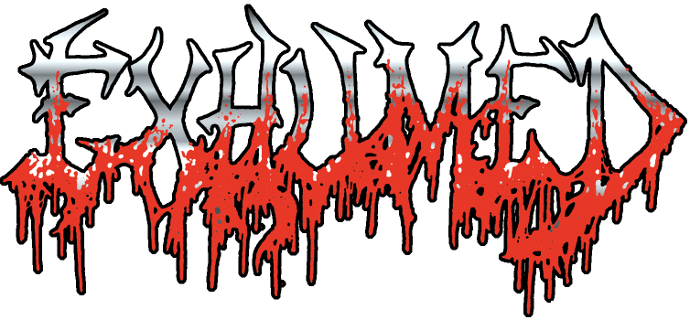
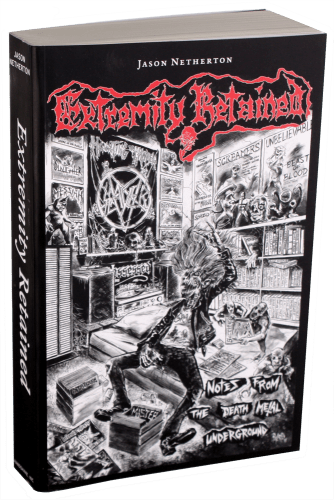
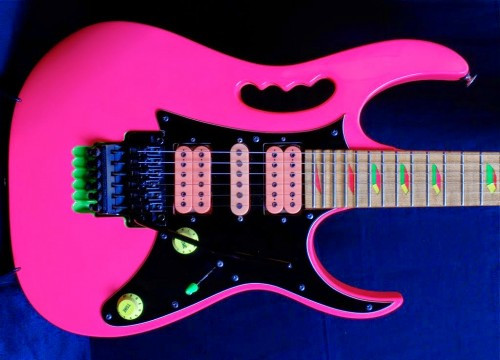
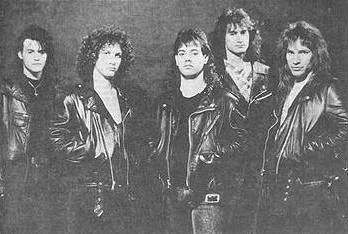
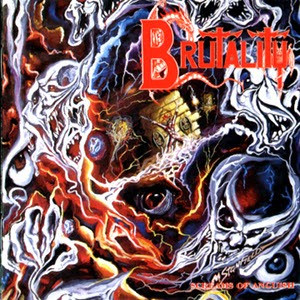
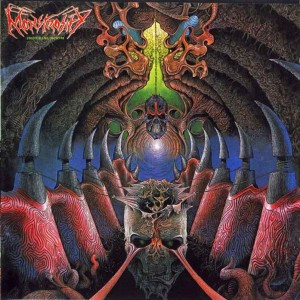
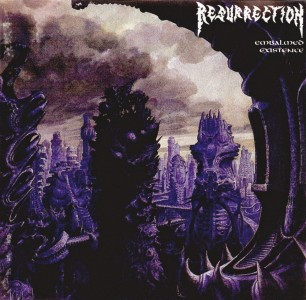
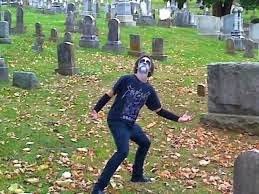
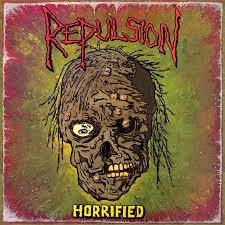
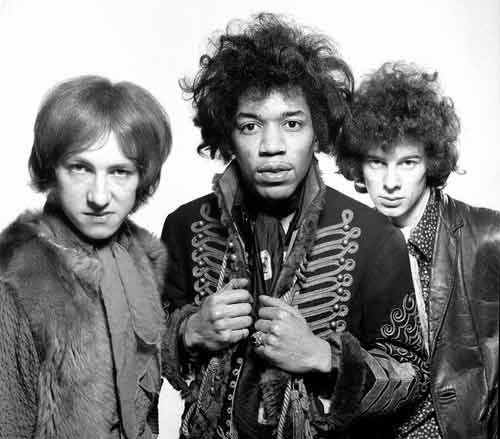
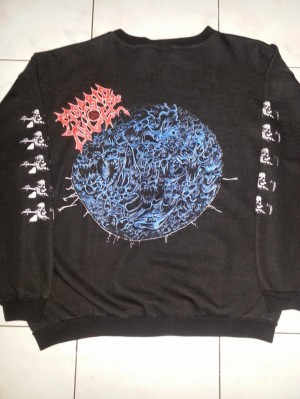
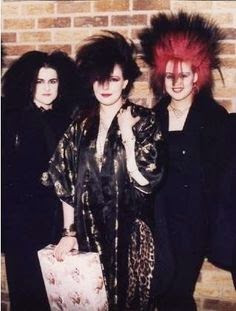
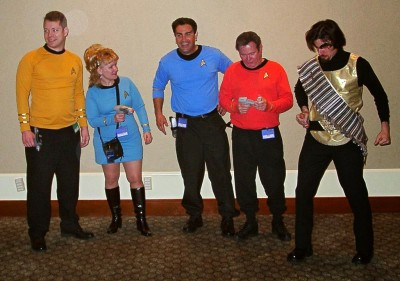
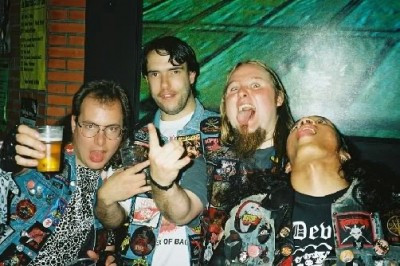
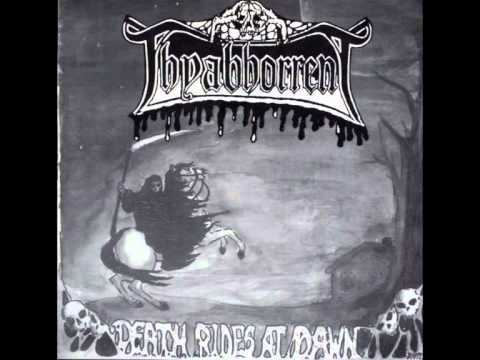
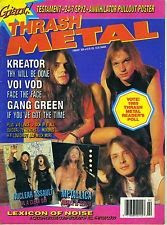
Great article. I was one of those kids that grew up in the mid-80s to early-90s, got into thrash and then death in that order. For a number of reasons, when Metal “died” in the US, I got out of music completely — there were things going on in my life like college and later kids — and I suppose I “grew up.” When I got back into music in the late ’90s and into the ’00s, things had changed a lot, and the death metal scene just wasn’t the same anymore. Which is why I suppose I became such a Black Metal fan. But even by then the “golden era” of 2nd wave BM had passed, though IMHO there are still plenty of good bands playing still in that genre.
But every once in a while I try to get back into Death, hear a lot of things. Like BM there are still some of the old bands playing, and a few new ones that are good. There are also a lot of mediocre and terrible bands playing these days too — ones that substitute raw agression for riffing or ambiance (for lack of a better term), which pushes me back into BM.
Yet I have to agree that now, more than any time since I was a kid, is a good time to be into and enjoy metal. When I returned to the genre I was floored by how diverse metal had really become. It makes being a devotee and hard-core fan of the genre rewarding.
I read this blog post by him when it aired a couple weeks ago I think. He makes a lot of great points, but I also disagree with him as it relates to his opinions on modern death metal. His opinion is based in his perspective, same for all of us. At the least, I am glad that he admits it boils down to his aesthetic tastes as it relates to what was around when he grew up VS what is being put out now. But I do not agree with statements such as this from him: “That’s why a band like Nunslaughter or Asphyx will always be more Death Metal than a band with tons of super-fast blast beats or the “lowest” vocals”.
I have to disagree, and I am a massive old school death metal fan. When I got into the genre I spent years taking in all of the early years and important bands. But at a certain point, I wanted to hear more than primitive things, and I wanted to hear the newer school style of insane out of this world rhythms and incredibly nutty songwriting. To him, these things are overkill, to me they are an evolution on what original death metal was built on. Really we are both seeing the same side of the coin–Feeling that we have heard it all before. But where we part is in thinking that there is a school or time period that was the peak. I still think plenty of bands are doing something new with the death metal form. There are always going to be a lot of bands who can play the style but bring nothing new to it. That was just as true in the past, as it is in the present. In spite of what Matt Harvey thinks. In fact, I have had this very discussion with my friend I stayed with in Florida this summer. She is 37 and has been a part of the death metal scene since the beginning. She agrees with me, that there has never been a better time for death metal than now. And that the best death metal is not merely limited to the originals. To each their own I suppose.
Thank you for re-posting this piece. Definitely one of the more interesting historical reflections on metal that I’ve read in quite some time.
I am about Matt Harvey’s age, I’m guessing, and, as a kid in the 80s, I grew up loving traditional metal (Iron Maiden, Judas Priest, then just called “metal”), hair metal (some of which I still like, so fuck you), and, of course, thrash. When thrash basically ended, I was an older teenager heading toward adulthood, and found myself drawn to the noisy, art-damaged aggro rock peddled by labels like Amphetamine Reptile and Touch & Go. That music had the volume and confrontational attitude of metal, but to teenage /young adult me, seemed smarter, more interesting, and, frankly, a lot more dangerous than both the metal I grew up with and the death metal that by then had taken its place.
And no, that music was not grunge, which was mostly terrible, and, in my mind, has aged much less well than the hair metal bands people in the 90s were all of the sudden embarrassed to admit they used to love. It was, however, often confused with grunge by enterprising A&R types, which led to a boom period for noise rock–or pigfucker or whatever you want to call it–the high point of which was probably a bidding war over Helmet’s _Meantime_. Needless to say, none of the underground bands that were signed to majors during that period (see also the Jesus Lizard, Melvins, Mudhoney, etc.) were the next Nirvana, and that whole sound faded away by the mid-to-late 90s or so.
I was still obsessed with music though, and, being a nerd, needed new music to obsess over, and thus, in the late 90’s /early aughts, belatedly discovered the death metal of the early 90s, along with the other extreme metal subgenres that had emerged while I wasn’t paying attention. I remember being surprised by how diverse metal had become, much more so than it was during the 80s. Indeed, it became so diverse that I’m still obsessing over underground metal a decade and a half later, and don’t think I’ll ever be able to listen to everything worth hearing.
Not sure that this adds much to the conversation, but I guess I’m coming from a slightly different place than Harvey. I really like the raw, punky death metal that he likes (and like his homage to that style in Exhumed) and am also not a fan of slam or most tech-death. But I am happy as hell that there is so much different metal being made and so much that has already been made I still need to hear *which I think is what he’s saying in his conclusion), and also that death metal has mutated into so many weird shapes and forms (which I guess is where my perspective might differ a bit).
Short version? Death metal is dead. Long live death metal.
Yet another thanks for reposting this, I’m in the same boat (old, just read Extremity Retained) and had thoughts similar to Mr. Harvey’s. Rambling ensues…
One obvious answer to the question “what happened between ’88 and ’93 that contributed to the genre’s downturn in popularity in the mid ’90s and its subsequent stylistic permutations?” is death metal’s initial UPSWING in popularity that was destined to crash. Although I remember having to search hard for the more obscure DM releases (Rockville MD Tower Records shout out), I managed to find a Symphonies of Sickness longbox at a local chain. They must have been moving enough units to get the attention of record companies looking for something like grunge to be the next fad, and Earache and Roadrunner were going to be the new Sub-Pop.
Every one of the death metal bands that released an album on a major label (Napalm Death, Carcass, Entombed, etc…) showed a definite change in the band’s sound, usually away from their DM roots. I know, Heartwork is the greatest album ever recorded, but it disappointed those of us who were into Symphonies. No Bill Steer vocals? Clean singing on Covenant? I’m still holding a grudge with ND over Fear, Emptiness, Despair fer chrissakes.
Not that these musical changes were entirely motivated by the major label deals, but the attempt to make DM the next big thing ended up backfiring and turning it into just another musical commodity (which didn’t even sell that well), as opposed to the diversity of the early underground scene described in Extremity Retained. Read Dig’s “Ask Earache” blog and you can see a person who made the complete transition from “guy who loves DM and knows some bands personally he’d like to release records with” to “industry metal guy looking for ways to move more units”. That process started with DM’s attempt at mainstream marketability, and to some degree is what “killed” it for me.
Also, I look at DM’s enshrining of the past as a good thing. The fact that Morbid Angel are still getting props for Altars (especially in light of their recent output) is a testament to how fucking good that album is. I love that I can go to a show and voice my appreciation to Suffocation, in person, for Liege of Inveracity. You don’t see classical fans complaining that people still listen to Mozart… because Mozart was fucking SICK.
Also, fuck Wolverine Blues right in the pussy.
Ace!! haha!! I love yr wrap up.
Definitely. I’m a “Morning Star” man myself.
…I think I may have missed your last point actually.
Psssht, Requiem is the trve kvlt shit. Death to false classical!
Thanks for your well-thought out and expressed comments, guys. I appreciate you taking the time to read my semi-organized ramblings! Thanks for seeing them as they are, just my experiences / opinions and insights, and using them as a catalyst to share yours. That’s awesome.
Thanks for writing it in the first place.
One of the things I really like about being a metal fan now is that, for a genre that is, on the surface, all about visceral feeling, it’s the subject of a surprising amount of thoughtful commentary. And I’m not talking about bullshit pseudo-intellectual manifestos, but honest assessments from people who care about where the music has been and where it is going. That’s the great thing about blogs like this one, the books Bazillion Points publishes, etc.
Looking forward to seeing Exhumed on the Carcass tour next month, and to hearing that Gruesome LP.
Dude, I could read stuff like this all day. Thank you for writing it, and thanks for all the awesome tunes! Looking forward to the tour…
I loved it. I thought it was a well written article. As that kid in the mid 95 listening to both Converge and Exodus and Suffocation it resonates very well with me.
I want to write a bunch more, but I am at work and in need of “getting things done™”.
I guess to summarize my feelings on all he said (and Im glad he said it) is that 2014 is an exciting time to be into metal. This site is a great example of why that is. Its like a metal funland right now. The cross pollination of various genres has reached an apex and despite there being “nothing new” there is certainl something for everyone.
Gone, I believe, are the days where some new metal juggernaut will change the genre. Its all going to happen too subtly for us to catch it like that, but there are still so many stalwarts of the genre. I think comparing metal heads to trekkies is pretty much spot on. And while some part of me wants to hear the next phase, another part of me wants people to keep honing the chops and churning out those sounds I love. If I get bored with metal (highly unlikely) I’ll just listen to my Built to Spill records, pull out some Talking Heads, listen to Jimi, or unearth my hardcore collection and get lost in that for a while.
For me, I have gone in and out of listening to metal, but never abandoned it, so it doesnt seem unnatural to just get into different stuff on occasion. A few years back I rediscovered all my 90s hip hop and made numerous mixes and pretty much listened to mostly that for the whole year, yet I’d never turn my back on Carcass or Order From Chaos even. (been listening to that and Merciless in a vain – yet powerful – attempt at an audio throwback thursday.)
In short, metal doesnt need us, we need metal. So keep it coming!
I largely agree with a lot of what Harvey says here, but I want to partially object to one point, seeing as I have the perspective of a much younger fan (born in the mid-’90s).
While it’s true that the Internet and illegal downloading has made everything more accessible, it also has allowed, in a sense, makes it harder to find. In the days of Headbanger’s Ball, you could find out about Kreator or Carcass just by watching cable television at the right time and channel, and it was perhaps much easier to find it “accidentally”. Now, there really isn’t much of any outlet as easy to find that purveys the same type of extreme music. I have to make a vested effort to look for even the more above-ground metal as opposed to, say, some random popular dubstep artist. The “iceberg” is much larger and more varied than it used to be, but more of it is submerged below the consciousness of the general public. In that sense, I feel like it was almost easier to become a metalhead “back in the day” than it is now. You have to have been a dedicated music fan to even find most metal now, which wasn’t necessarily the case 20-30 years ago.
I’m putting this poorly (possibly because college is draining my ability to write coherently at present), but I hope my idea kinda gets across.
You rule, Leperkahn, but, as someone who watched a lot of Headbanger’s Ball, believe me, it was mostly crap.
True, most of it was crap, but there was that bit of good stuff. It’s a difference of a small bit of good stuff in a somewhat public sphere, versus absolutely none.
I’d argue that, thanks to the internet, underground metal is way more public now than it has ever been. In five minutes on NCS, I can find out about more interesting bands than I could in two months of watching Headbanger’s ball.
One thing I do miss about the pre-internet era is the experience of buying an album based on cover art, word of mouth, or reading about in a zine, and then listening to it for the first time after making that investment. That had its risks–occasionally you’d buy something that sucked and be stuck with it–but it made for some cool discoveries too.
I’d still argue that it’s easier to find MTV (and thus Headbanger’s Ball) than NCS. Once you find something like NCS, you obviously find more stuff, but the entry into underground metal in the first place is perhaps a bit tougher.
Indeed, I remember picking up Demilich because it “looked” like a death metal album even though I’d never heard it… then taking it home and having my little head blown off.
One would probably also spend more time listening to said risk, rather than clicking on the next link after 30 seconds. I have tons of “grower” albums that I probably would have never loved so much if I only spent one listen to them.
Yeah, mostly crap, but occasional stuff like the Morbid Angel – God of Emptiness video. That one made me realize music could be really evil, not a bad thing to get from a mainstream TV show.
As an old DM asshole, I must disagree here. You didn’t “stumble across” Carcass on MTV, you waited through two hours of absolute crap until they played it at 1:55am, and probably missed it because you fell asleep to a Saigon Kick video. And you LIKED IT!
Youtube is a pretty public sphere, and there you can watch a Carcass video whenever you want, as many times as you want. I swear, these kids…
You have to know about Carcass to find them on Youtube. Youtube doesn’t just shovel you Carcass out of nowhere, not unless it’s using whatever analytics it uses from you already watching underground metal videos there.
I dont understand how you think it is harder to find underground metal today than back in 1991 when you had to wait for the fanzine to be mailed to your house. Than after reading reviews or interviews, you would have to wait until the demo arrived in the mail from Sweden, Germany, Finland etc. Now if I am interested in a band, I type in the name of the band, the name of the album and reviews, and a bunch of sites come up. Often I will read the review and than look thru other reviews on the site and discover new bands that way. And that is how I often find newer or new to me metal review sites, and I go back to the sites that constantly review new music. Or I type in German black metal on youtube or lastfm for example and discover a new band that I have never heard of before. After discovering a new band thru various methods, I can actually listen to a song or two via bandcamp, youtube etc pretty much listen to a song or two instantly, which is also something I could not do in 1991.
I agree with all of that, except I liked Saigon kick. Or maybe that was Hanoi rocks.
As a kind of companion post here’s the mighty Autothrall’s review of Exhumed’s Slaughtercult from 2000. It’s good stuff, both the review and the album.
http://metalbandcamp.com/2014/10/exhumed-slaughtercult.html
That guys the best. Love his write ups.
I think I’m in an unusual place as a metal fan. I’m sure I’m older than Matt Harvey, but I didn’t get into metal until late in life, and consequently much of what he writes about in this piece is interesting to me because it’s like a history lesson — I didn’t live through what he and many others in this thread lived through. I’ve spent a lot of time over the last decade trying to catch up on what I missed while at the same time exploring all the new stuff. And the new stuff has just reached flood-like proportions — I’ve seen it explode, as everyone else has, just during the time I’ve spent watching the scene. It’s almost overwhelming, at least for someone who’s trying to stay on top of things and attempting to sift the good from the not so good.
As a result of this maybe unusual perspective, I’ve reached two conclusions. First, a lot of the classic and influential death metal, thrash, and black metal from the early years still holds up incredibly well. I say that not out of nostalgia — because I had no idea this stuff existed when it was coming out — but because it just sounds really good to me. And second, the incredible diversity of metal today is like a huge gift to a music fan. Even in the space of a decade, I’ve seen an enormous non-stop burst of creativity. Granted, a huge percentage of the releases aren’t worth a second listen (or even a first), but to my mind stagnation is the last thing that metal (including death metal) has to fear. At least in my case, though I understand the argument that music has been devalued because it’s so easy to get it (and get it for free), I feel more passionate about what I’m hearing and discovering on a weekly basis than I probably ever have.
very interesting article, although it’s way more ponderous than i’ve been capable of. after all, it’s just music. sure, i’ve been a metal junkie for over 30 years. i’m consumed by it, it’s a daily ritual for me. but all the time i dedicate to music is spent either enjoying it or creating it, not meticulously analyzing the ebb and flow of musical trends and speculating on rise or fall of particular genres. that just sounds like a massively unnecessary exercise in stress and frustration.
Fuckin true!!!!!!
Thank you very much for this article.
Great article. I’m about the same age as Matt Harvey, and have had countless online arguments about how modern death metal is simply too nice and calculated, regardless of how much better it’s played, but I’ll happily accept that’s entirely because I am of my time and I’m fighting a losing battle. I’m of the era that fell off its chair upon hearing Napalm’s original Peel Sessions, which I still maintain are the most honest and vicious pieces of extreme music ever recorded, but I accept the deathcore and djent kids doubtless consider that a ludicrous suggestion. Who am I to suggest my excitement at hearing Instinct of Survival on Radio One is greater than their excitement at finding the latest clinically executed tech-fest on YouTube? Christ, I even like some of it, and I have the internet to thank for that. That said, I can’t be the only one who misses the days when extreme music was genuinely hard to get hold of? The thrill of that package of TDK C90s from Brazil landing in the doormat is something I’m glad I experienced. Sure, the bulk of it was crap, but every once in a while one of those badly xeroxed demos was Mystifier. No amount of instant gratification can beat that.
Just wanted to say thanks for your comment — which I should be saying in response to all of them in this thread so far. It’s exactly the kind of discussion I was hoping Matt’s piece would generate around here.
Wha? When was napalm death ever industrial metal? Written like a true poser who has no clue.